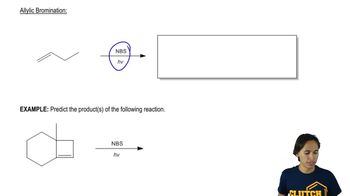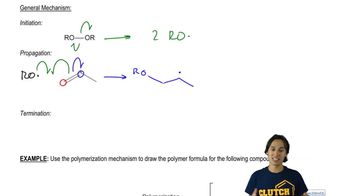Draw the products of the following reactions, including all stereoisomers:
c.

 Verified step by step guidance
Verified step by step guidance Verified video answer for a similar problem:
Verified video answer for a similar problem:



 6:15m
6:15mMaster The general mechanism of Allylic Halogenation. with a bite sized video explanation from Johnny
Start learning